The Farnsworth House, a paradigm of the International Style of Architecture, was conceived and erected between 1946 and 1951 by the esteemed architect Mies van der Rohe. Nestled within a 10-acre secluded wooded area near Chicago, with the Fox River to the south, this single-room weekend retreat was originally designed for Dr. Edith Farnsworth, a prominent Chicago nephrologist. The steel and glass construction maximizes its setting, exemplifying Mies’ vision of a profound connection between dwelling and landscape, allowing Dr. Farnsworth to indulge in her diverse interests including playing the violin, translating poetry, and nature appreciation.
On November 17, 2021, to coincide with what would have been Edith Farnsworth’s birthday, the house marked its 70th anniversary with a special rededication event that was streamed live on its Facebook and Instagram pages. During this event, the retreat was officially renamed the Edith Farnsworth House to honor the original owner’s extensive contributions to its landmark design and to acknowledge her wide-ranging accomplishments as a research physician, classical violinist, poet, translator, and supporter of the arts. “We hope this seemingly simple act of inserting her first name has the larger effect of inserting her into the ongoing history of modern architecture,” commented Scott Mehaffey, the executive director of the Edith Farnsworth House.
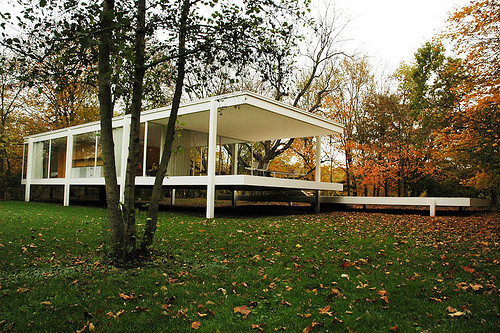
During a dinner party in 1945 the intelligent client, Dr. Farnsworth, hired Mies to design as for himself, resulting with a very special work of modern architecture. The single-story pavilion consists of eight L-shaped steel columns that support the roof and the floor frameworks. All steel structural connections were welded in ways that minimize visual presence as well as sandblasted and primed after installation giving the steel skeleton a structural yet expressive look.
In between these columns are 1/4″(6mm) thick single-pane clear glass panels spanning 9′-6″ (2.9m) from floor to ceiling channels around the entire house opening up the interior to the woods around it. The glass façade is what ties the building with its tranquil surrounding. Privacy and shading are conditioned by many trees that were located on the original site with only a curtain track around the interior providing extra seclusion. The house maximizes the experience of the rural silence and the nature around it. As Mies stated “Nature, too, shall live its own life. We must beware not to disrupt it with the color of our houses and interior fittings. Yet we should attempt to bring nature, houses, and human beings together into a higher unity.”
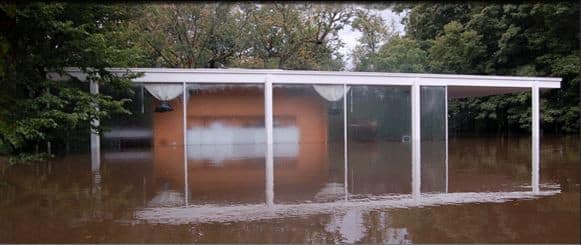
As he wanted to minimize the disruption of the surrounding Mies intended the house to be as light as possible on the land so he raised the ground floor slab 5′ 3″ (1.6m) of the ground allowing only the steel columns to reach the ground. This elevation also prevented the flooding of the house which was anticipated to happen. However, Mies was not able to predict the increase in water runoff caused by the development in the Chicago area. The house was first flooded in 1954 when the river rose six feet above the one-hundred-year-mark which caused severe damage to utilities, wood veneers, glass and to furnishings. Since then the interior of the house has received flood waters on six occasions, in 1997, 1998 and just recently in 2008.
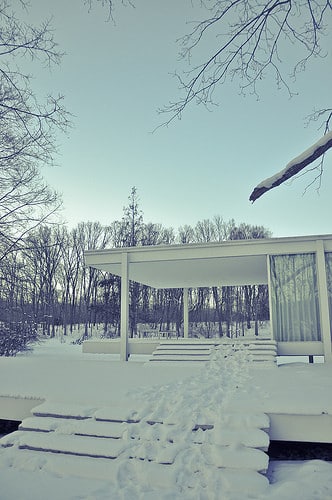
The interior of the house is disrupted only by the asymmetrically placed core of two block constructed primarily of primavera plywood, contrasting the steel and glass façade. The two wood blocks, one being a wardrobe cabinet and the other a kitchen, toilet, and fireplace block, are the only elements that puncture the severe roof and floor plan. The larger core, containing the fireplace and the kitchen, seems like a separate house inhabiting the larger glass house. In the concept of creating a light structure that does not clash with its surround in any way, the drain and sewage pipes that puncture the floor slab and go to the ground, as well as the vertical shaft that contains the bathroom vents and the fireplace flue that goes through the roof, are suppressed by being recessed into the more inaccessible and discrete center areas of the slabs, making them virtually invisible from view, even from the exterior of the house.
The house in its basis is one room filled with free standing elements that give subtle hints of utilization of the open space, zones for sleeping, cooking, dressing, eating, and sitting. Very private areas, such as the toilet, are enclosed within the wooden core. The effect of this full transparency is to blur the usual boundaries defining domesticity. The distinction between public and private, outside and inside is something that disappeared in the Farnsworth house giving its occupants a flexible and unobstructed space in which to fulfill themselves as individuals.
Acting like a transition between the living area and the ground a third, floating slab, represents the entrance to the interior connected by two sets of wide steps connecting ground to terrace and then to porch. The terrace lied in the shadow of a large Black Maple tree, which was integral for the placement and orientation of the house on the site. Incidentally the tree was the reason the house became a State Park in the 1960s, however due to disease and old age the tree died in the 2000s and was later removed. None the less, the glass structure is still in communication with nature. Open views from the interior enlarge the area and changes that the seasons bring give a meditative, almost monastic feel to the inhabitants of the house. The structure stands strong as a masterpiece but the discrete white materialization of the steel construction and the transparent glass panes make it almost invisible in respect to the nature. As Mies stated on his work, “If you view nature through the glass walls of the Farnsworth House, it gains a more profound significance than if viewed from the outside. That way more is said about nature—it becomes part of a larger whole.”
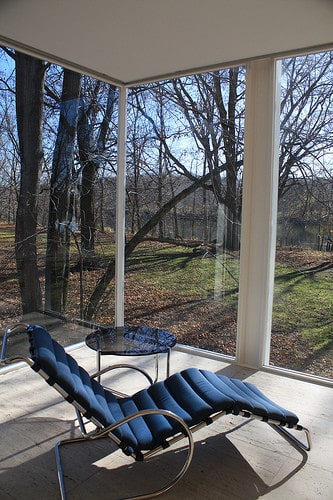
The house was attacked for the lack of coziness and warmth caused by large areas of glass in combinations with the steel frame, known features of International Style, as well as for it energy inefficiency and proven difficulties to live in with the only air ventilation coming from the two operable windows and the main entrance door.
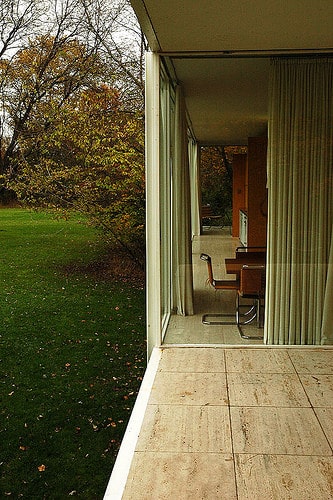
Still, the Farnsworth house with its elegant simplicity it continued to receive vide critical acclaim as a masterpiece of modernist style. In his design Mies neglected some traditional domestic conventions and comforts and gave a new reinterpretation of domestic space creating a prominent icon of Modern Architecture in America that became the inspiration for other works, such as Philip Johnson’s Glass House.
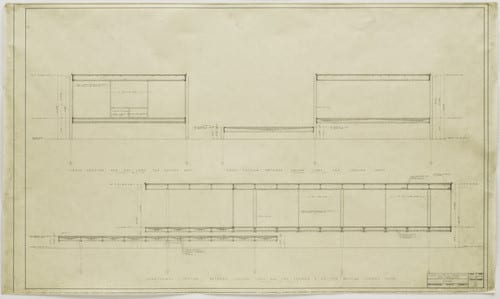
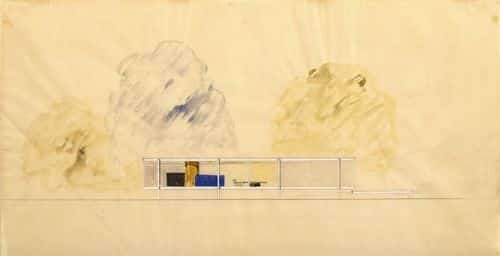
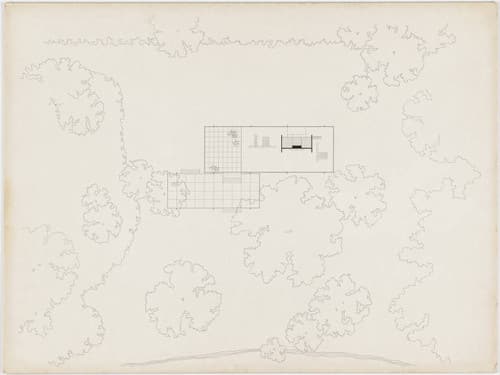














Edith Farnsworth House, formerly the Farnsworth House ©Jack Boucher
Project Location
Address: 14520 River Rd, Plano, IL 60545, United States



Beautiful architecture, poised in nature.